How To Care And Grow Bamboo Indoor Guide
Discover the secrets of cultivating bamboo indoor with our Ultimate Guide. indoor greenery tips and insights for successful bamboo growing...
We buy so you won’t have to! We earn commissions from recommended products, which fund testing new items by our team of experts. Thank you for your support!
Ever thought about propagating fiddle leaf fig without spending too much?
Well, you’ve got choices! Whether you’re a plant pro or just starting out, you can use soil, water, or air layering to do it. Each way has its own good points and things to think about.
In this guide, we’ll walk you through each method step by step. By the end, you’ll have a good sense of which one best suits your style of growing plants.
Yep, you can definitely grow more fiddle-leaf fig plants by taking cuttings! It’s not as simple as it is with some other types of easier-to-root plants, but hey, that’s our dramatic little figs for you. Even if they need some extra propagation TLC, don’t let that scare you off.
Taking and rooting cuttings is very doable and so worth it in the end when you have a whole troop of fiddle fam! With a bit of patience and by following some key steps, you’ll start seeing that new growth before you know it.

Fiddle Leaf Fig propagation, Image by Freepik
Joanna Gaines, a houseplant expert, simplifies it: “Growing a new fiddle leaf fig from a stem cutting might seem tough, but it’s totally doable with the right approach.”
In simple terms, just having a single ficus lyrata leaf in water won’t result in growing branches or a full plant. To succeed, focus on using a stem cutting instead.
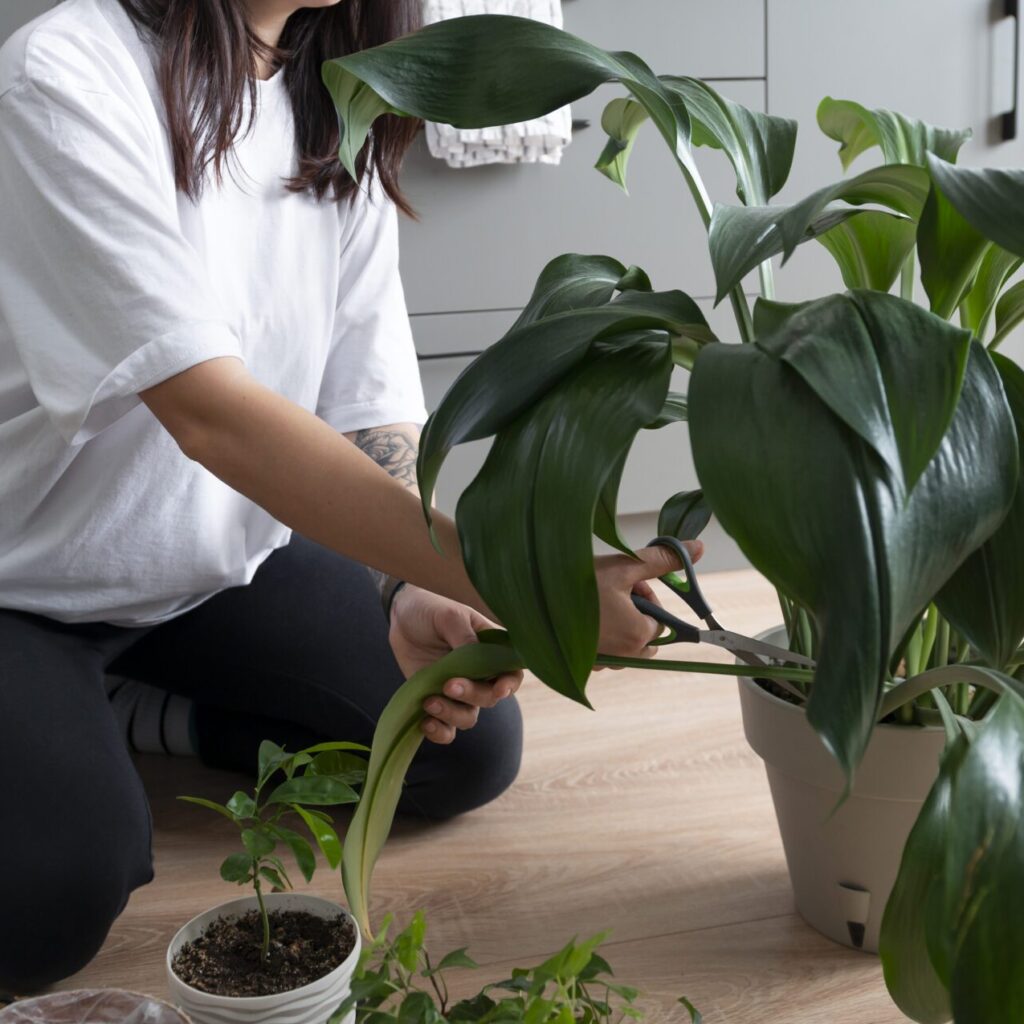
Stem Cutting Image by Freepik
So when cutting, be sure to snip off a piece of stem with a few leaves on it. That way, your fiddle leaf propagation has everything it needs to actually grow into a baby lyrata plant. Then, you can root it just like you would any other cutting.
This is because fiddle-leaf figs need those nodes on the stem to grow new leaves and branches. Other plants, like begonias, can prop from just a leaf, but not our lyrata plant!

fiddle leaf propagation : node explaining
Growing more fiddle leaf figs from cuttings takes effort, but it’s totally worth it. Buying new plants can be expensive, so propagating your own fig family at home is a budget-friendly way to expand your plant crew!

Growing more fiddle leaf figs
I know trying new stuff with your greens can seem stressful. But trust me, multiplying your fiddle leaf figs isn’t as hard as you might think it is.
I’ll walk you through it step-by-step; no plant PhD is required. Before you know it, you’ll have baby figs sprouting all over the place!
I know we’re all eager to get more fiddle leaf ficus lyrata in our lives. But timing is everything when it comes to propagation.
Martha Stewart, an expert in gardening, suggests that taking cuttings during the spring and summer improves your chances of success.
The best time to take your fiddle leaf fig cuttings is during spring and summer while the plant is in its active growing phase. This gives the cutting the best chance to root successfully and avoid shock from being snipped off its mama plant.
You can technically try propagating in fall and winter, too. But growth will be much slower, and you risk the cutting not making it.
According to Fiddleleaffigplant, “If kept warm, Fiddle leaf fig plant propagation can happen any time of year.“
The key is heat. Having your prop under a heat mat or in a warm spot will help stimulate root growth no matter what time of year it is.
So, while spring and summer are the traditional times for propagating fiddle leaf ficus, don’t hesitate to take cuttings during the winter as well. With the right environment, your lyrata plant can root in any season.
Here are the basic supplies you’ll need:
Having the right tools and supplies on hand will set you up for success when propagating fiddle leaf figs.

Fiddle Leaf Fig Propagation tools
A study on ResearchGate done by Sara Lee Kit Yee, “Invest in quality pruning shears and rooting hormone – it makes all the difference.”
For fiddle leaf fig potting soil, you need a specialty blend with good drainage and nutrients to support your cutting’s growth into a thriving plant. Additionally, a mix of bark, coco coir, and perlite provides ideal aeration and moisture.
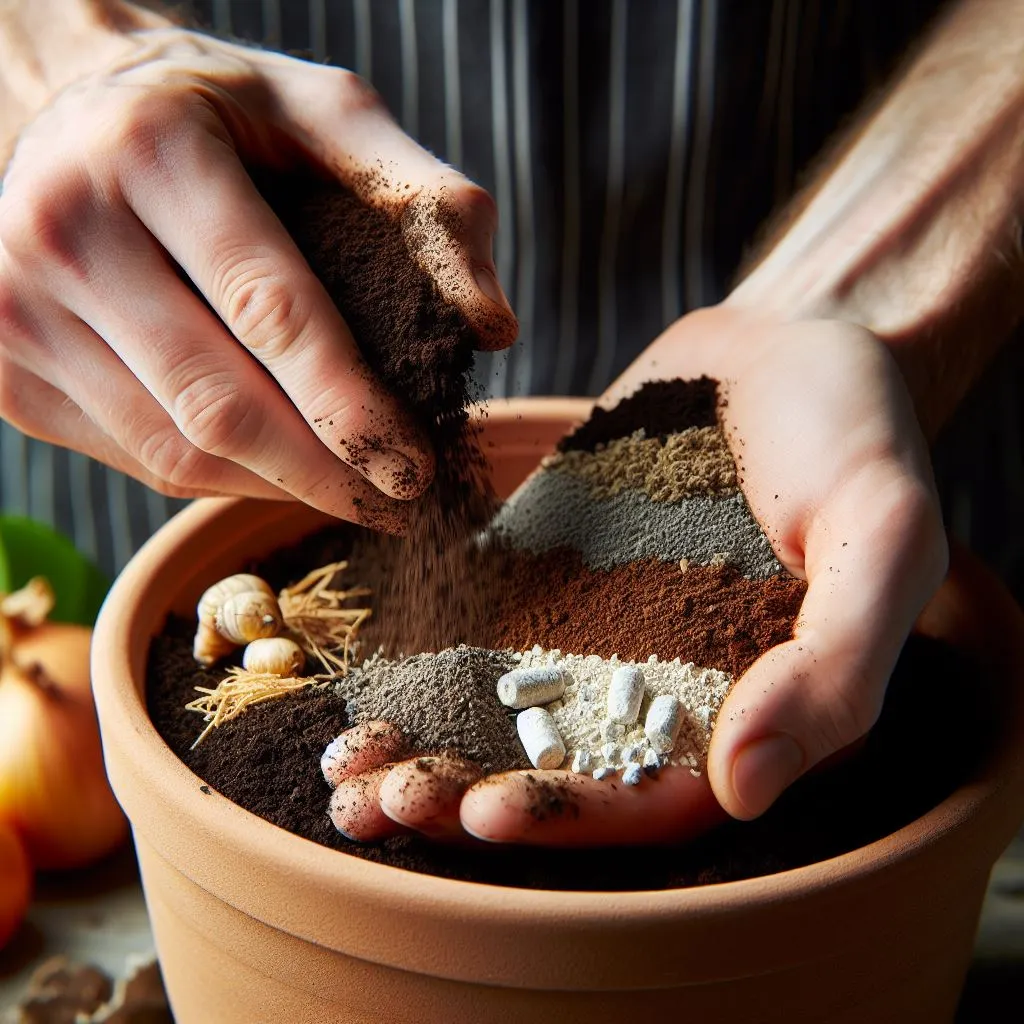
mix of bark, coco coir, and perlite
Consider using rooting supplements with liquid formulas containing natural ingredients like humic acid. These supplements boost root growth and provide nutrients, aiding both the cutting and the parent plant’s recovery.
Make sure to wash your tools and containers well! We want to zap any little germs so they don’t cause issues for our cuttings.

cleaning the propagation tools
I like to pop mine right in the dishwasher, but rubbing alcohol or a mild bleach solution works great too. Getting rid of those pesky bacteria means our baby figs will have the best chance to grow happy and healthy.
With the right sterilized equipment and a few key supplies, your fiddle leaf fig propagation is primed for success! Let those baby figs grow.
When it comes to propagating fiddle leaf, there are three main methods: soil, water, and air layering. The American Society for Horticultural Science says these are the top methods.
In my experience, soil propagation has given me the best results. Additionally, I’ve actually propagated over 100 baby fiddle leaf figs using this method. It’s been incredibly successful for me.
Soil propagation means putting the cutting directly into the soil, letting the roots grow right away.
With water propagation, you suspend the cutting in water until roots form, then transfer it to the soil. You can watch the roots grow this way.
Air layering is when you grow a cutting while it’s still attached to the parent plant. The roots grow inside the cutting before you remove it.
Each way has its own benefits and things to consider. The important thing is to use a healthy stem cutting from a growing plant. Then, choose the method that suits you and your fiddle leaf fig.
To make more fiddle leaf fig plants, you need to start with good stem pieces. Here’s what to do:
Nodes are spots on the stem where leaves and new growth appear. They play a crucial role in root and leaf development.
For better growth chances, choose a stem piece with at least three nodes. You can cut one long stem into several pieces, ensuring each piece has nodes for new growth.
Use clean, sharp scissors to cut the stem, aiming for 3-4 nodes along the stem for each cutting.
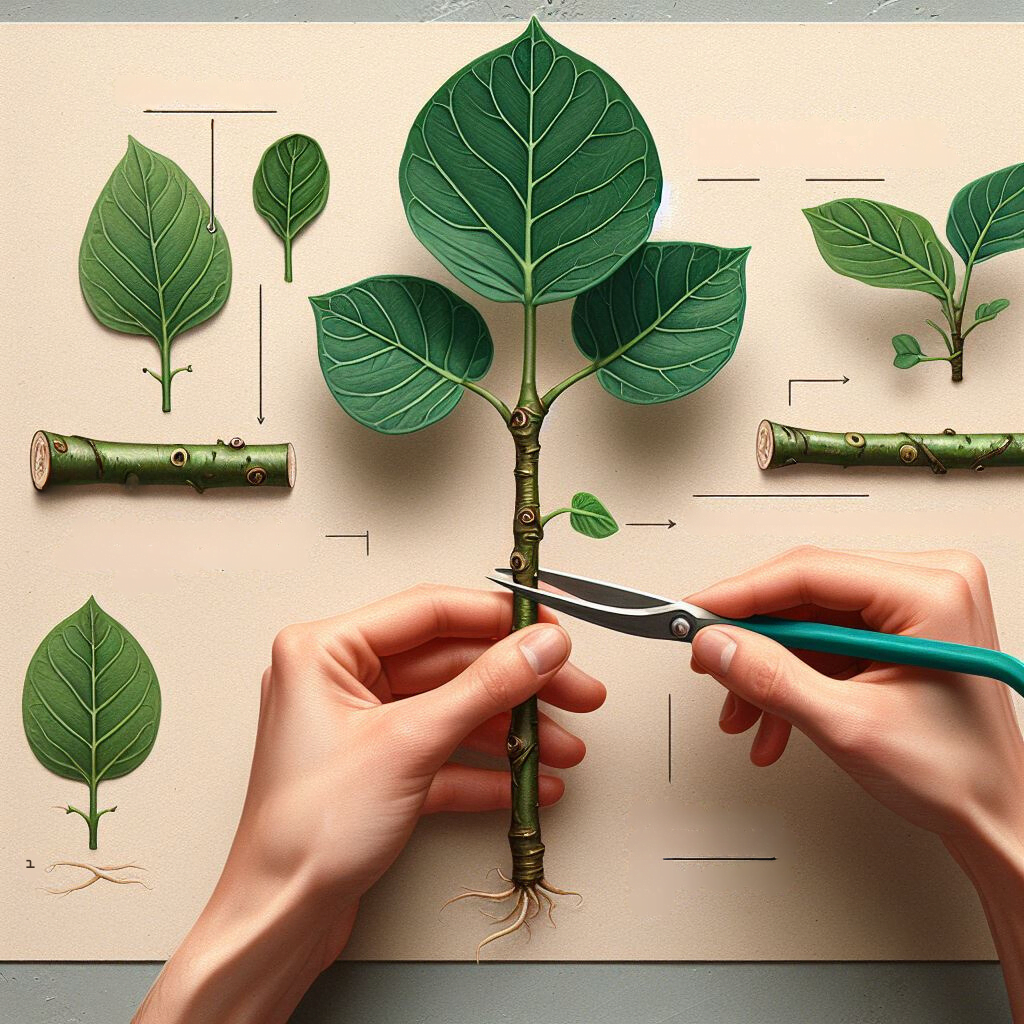
Preparing the Cutting
to trim the fiddle leaf. Remove extra leaves, leaving at least one for photosynthesis. Trim the stem about 3-5 inches below the top leaf and dip the cut end in rooting hormone to aid in rooting, especially since fiddle leaf figs can be tricky to root.

Trimming and Treating the Cutting
Expect milky sap when cutting; avoid swallowing it, handle the sap, and cut carefully.
Ideal stem cuttings are 12-18 inches long with 1-3 leaves and at least 1-2 nodes where leaves were removed. Both new and old stem cuttings work.
Optimizing Energy Use: Keep only 2-3 leaves at the top of the cutting to conserve energy.
When taking your fiddle leaf fig cutting, you can cut straight across the stem or at an angle.
As greenhouse experts Greenhouse Studio note, angled cuts expose more surface area for better root development. However, they also slightly raise the risk of disease entering the cutting.
Commercial growers prefer straight cuts to limit disease spread. However, for home gardeners, the rooting benefits of angled cuts outweigh the small disease risk.
I recommend cutting your fiddle leaf fig cuttings at an angle rather than straight across. The added surface area gives your cutting the best odds of propagation success.
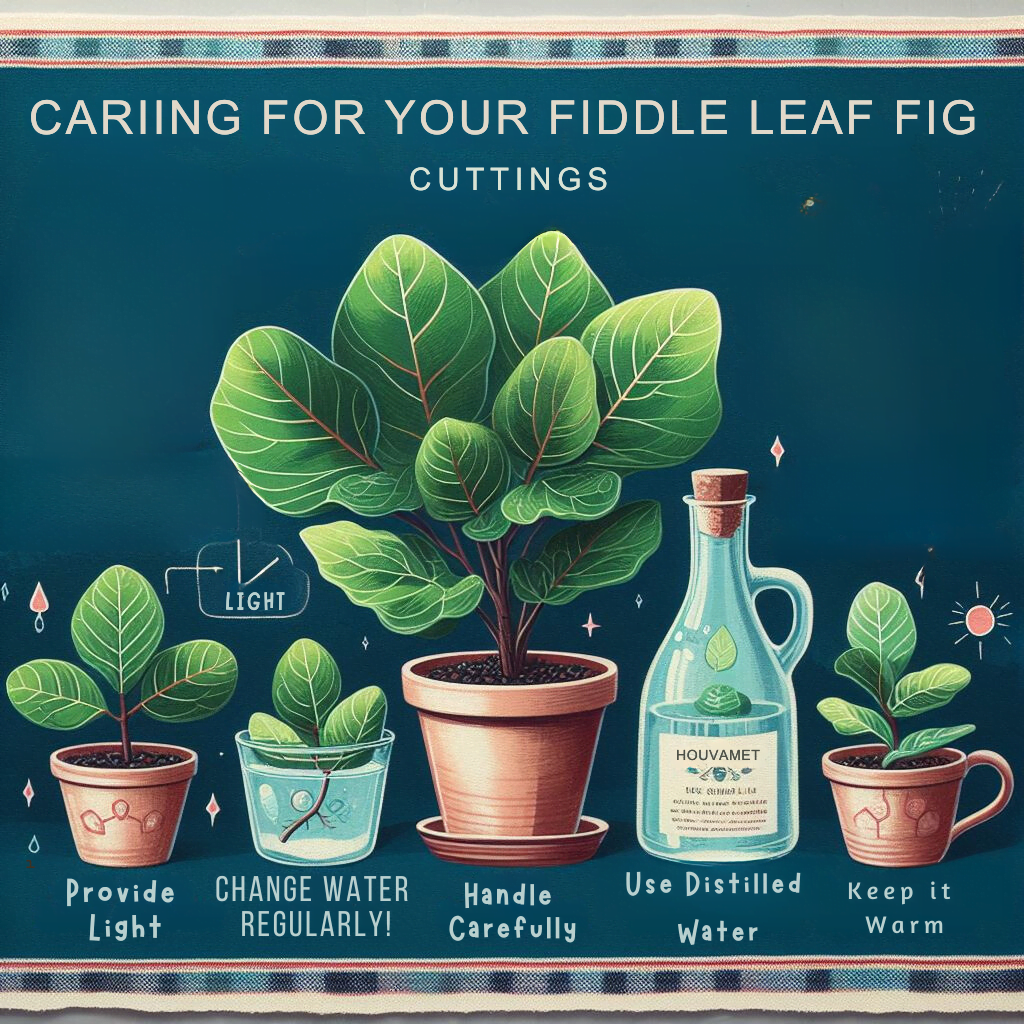
6 steps to care for Your Fiddle Leaf Fig Cuttings
So you’re looking to increase your fiddle leaf fig squad without spending a ton of money? That’s nice! Luckily, you’ve got a handful of propagation methods to choose from when it comes to multiplying these drama queens. Every option has some pros and cons to weigh up.
Factors like time, resources, and comfort level play a role in determining the best propagation method for your fiddle leaf fig. In the following sections, we’ll explore these different propagation techniques step-by-step.
Soil propagation involves rooting your fiddle leaf fig cutting directly in a potting mix:

Soil Propagation Method to propagate fiddle leaf fig
The key is sterile, consistently damp soil and high humidity from the plastic cover. This prevents infection while the delicate new roots are established.
Avoid tugging on the cutting to check roots as this can damage the emerging roots. Also, take care when repotting so as not to disturb the new roots.
With the proper sterile environment and care, soil propagation allows growing roots to be safely enclosed in soil.
So, water propagation is all about growing a fiddle leaf fig cutting in water. It’s pretty cool to see those roots popping up in a glass jar! For the best results, grab a cutting with about 3 nodes, not just a single leaf.
When you plop it in room temperature water, make sure those nodes are under the water, but keep the leaves above.
Now, find a spot with bright, indirect sunlight for your jar. Oh, and don’t forget to change the water every week to keep things fresh.
Soon enough, you’ll start to see those roots showing up, usually within a few weeks. Wait till they’re about 1-2 inches long before you think about moving them to soil.
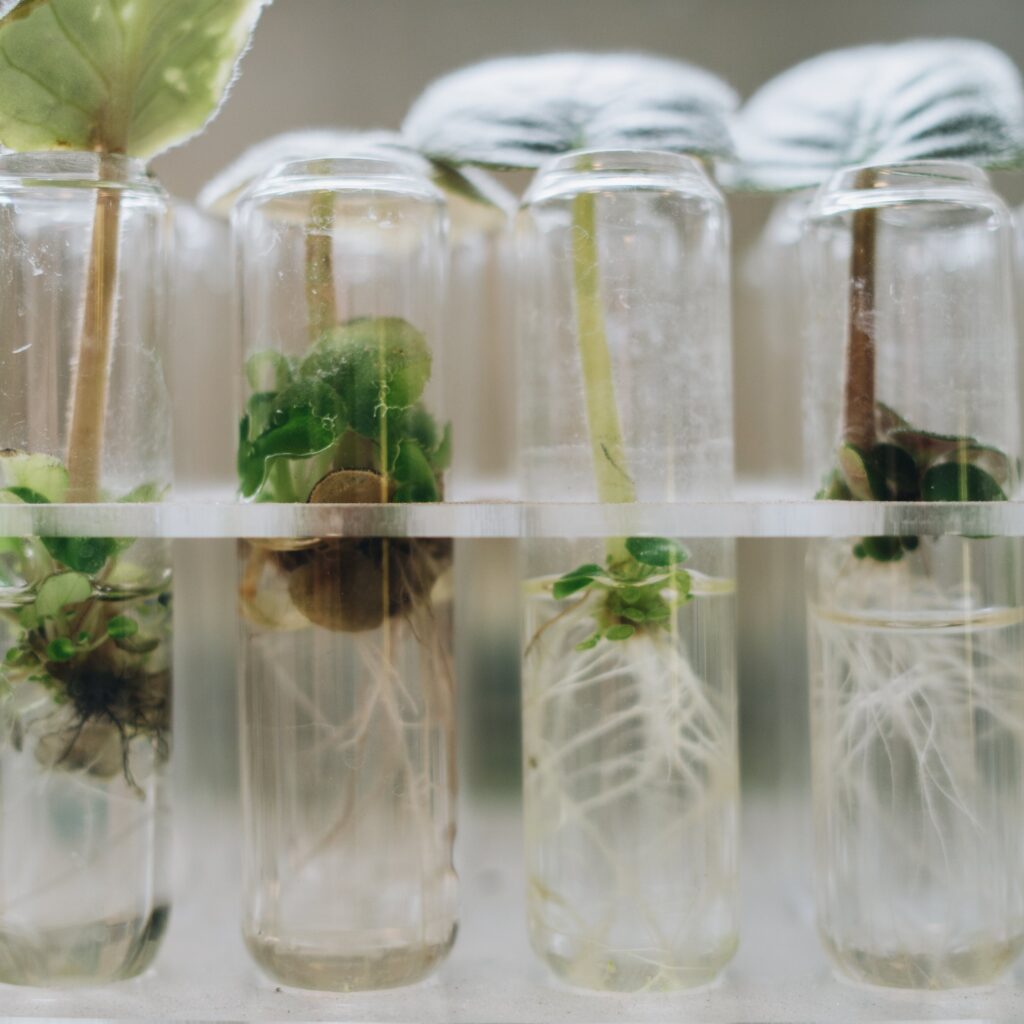
Water Method to propagate fiddle leaf fig
Once your cutting has those roots, it’s time to plant it in some well-draining soil. Give it a good soak and keep the soil nice and damp as it switches from water to soil life.
One of the cool things about water propagation is how easy it is to keep an eye on those roots growing, and you’re less likely to hurt them compared to planting straight in soil.
But, here’s the thing – plants generally prefer soil because it gives them oxygen. Soil propagation is more of a thing for big-time growers, but water propagation is perfect for us home gardeners.
So, with the right jar, water, light, and care, you can enjoy watching those fiddle-leaf fig roots grow right in front of you!
Air layering involves rooting a cutting while it’s still attached to the parent plant. This method allows for the propagation of a large, mature cutting that can immediately support itself with an established root system.
It requires more skill but offers the advantage of developing a robust root system on a mature branch before removing it to propagate.
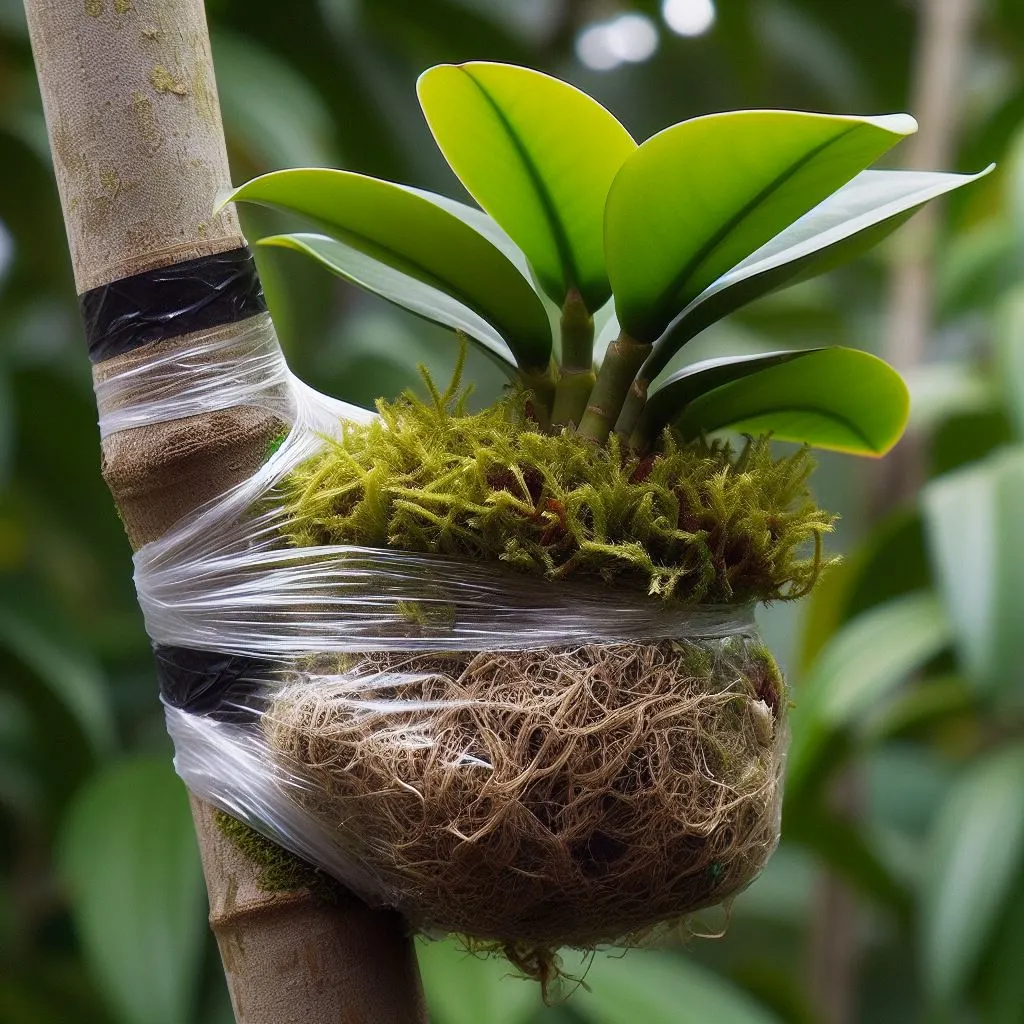
Air layering method to propagate fiddle leaf fig
To perform air layering:
At Budge to Gadget, we only use reliable, up-to-date sources such as Research papers, books published by respected academic publishing houses, and articles written by well-respected authors. To support the information in our articles. Read our sourcing and fact-check process to learn more about how we fact-check and maintain our material’s accuracy, dependability, and trustworthiness.
Sure can! Just snip off the top of the fiddle leaf fig stem with some leaves still attached. This cutting can be propagated into a whole new fig tree.
Give it about a month or two before those fig-cutting roots kick in. Then you’ll have yourself a baby fiddle leaf fig ready for planting!
Nope, they hate it! Repot your propagated fiddle leaf fig when it outgrows its home so those roots have room to stretch out.
Only when propagating in water. Otherwise, plop ‘em in soil and water that fiddle leaf fig baby as needed. Too much moisture gives these drama queens issues.
Furthermore, not one bit of Wet fiddle leaves leads to nasty fungi and disease. Water down at soil level to keep that fiddle leaf fig leaves fresh and happy.
Marble Queen pothos can grow up to several feet long, depending on its environment and care.
Additionally, wet fiddle leaves lead to nasty fungus and disease. Therefore, water down at the soil level to keep those fiddle leaf fig leaves fresh and happy.
Nice and thorough but not too often! Water deeply but wait until the top inch of soil has dried out before doing it again.
Take cuttings with a few nodes for built-in branches! Pruning above lower nodes on a plant encourages new stems too.

kahla akram is a professional home decorator, interior designer, and master gardener writer. he is also a seasoned expert horticulturist, with a wealth of experience and a string of impressive achievements. his work has been featured in a multitude of global magazines, and he operates under his highly respected brand, budge to gadget.
Discover the secrets of cultivating bamboo indoor with our Ultimate Guide. indoor greenery tips and insights for successful bamboo growing...
If the plant community were to hold the Oscars event, they would likely give the Best housePlant award to Golden...
Moving into a dorm room is exciting, but making it comfortable and functional can be a challenge. Lucky for you,...
Creating a whimsical adult bedroom is all about adding a touch of magic and playfulness to your personal space. It’s...
Hey there! Living in a dorm can be quite the adventure, right? But one thing we all know is that...
Subscribe to our newsletter for the latest decoration designs, ideas, and tips. Stay connected with us!